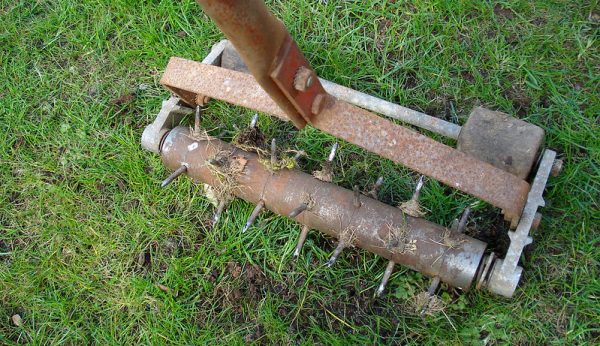
You take pride in your lawn and want to keep it as healthy and vibrant as possible. So you might want to expand your list of lawn care tools to include a lawn aerator.
A lawn aerator is pretty much what its name suggests. It’s a tool designed to aerate the soil in your yard, allowing oxygen and nutrients to enter the soil while also improving drainage.
This can be necessary if the soil in your lawn has too much thatch (dried plant remains). Likewise if it is heavily compacted by frequent activity.
A typical aerator is a rolling device with a row of specially designed spikes that rotate and penetrate the soil as the machine travels across your yard. Although they are simple in essence, they’re also a little more complicated than they appear at first glance.
Here are a few things to keep in mind when shopping for a lawn aerator.
Like growing grass? You can start a turf farm on your acreage.
1. Spike or Plug?
Here’s your main consideration. There are two types of aerators—spike aerators and plug aerators—and they are suitable for different types of lawns.
- A spike aerator is designed to simply punch holes in the soil to improve aeration.
- A plug aerator actually removes some soil (“plugs”) from the ground.
Generally speaking, people prefer plug aerators to spike aerators, though it depends to some extent on the lawn soil type.
Clay soils can become compacted in other ways by the use of spike aerators, so a plug aerator is the better option. But for lighter soils, a spike aerator can be a viable option.
2. How Wide Is the Aerator?
Obviously, the width will determine how much soil you can aerate on a single pass.
A unit that is 4 feet wide will aerate 33 percent more soil on each pass than a unit measuring 3 feet wide, which can add up to significant time savings for large lawns.
Aerating an area 12 feet wide would require just three passes with a 4-foot aerator as opposed to four passes with a three-foot aerator.
Check out these 4 unusual tractor attachments!
3. Hand Pushed or Tractor Powered?
Some small aerators are designed to be pushed by hand. Others are designed to be towed behind a lawn tractor.
Hand-pushed aerators offer the advantage of simplicity (all they need is muscle power to operate) and are less expensive as well. But they’re more tiring to use and naturally aren’t as wide as aerators pulled behind a lawn tractor.
For small lawns, a hand-pushed aerator could be a good choice. But for large yards, a larger unit for a lawn tractor is probably the way to go.
This article originally appeared in the May/June issue of Hobby Farms magazine.




